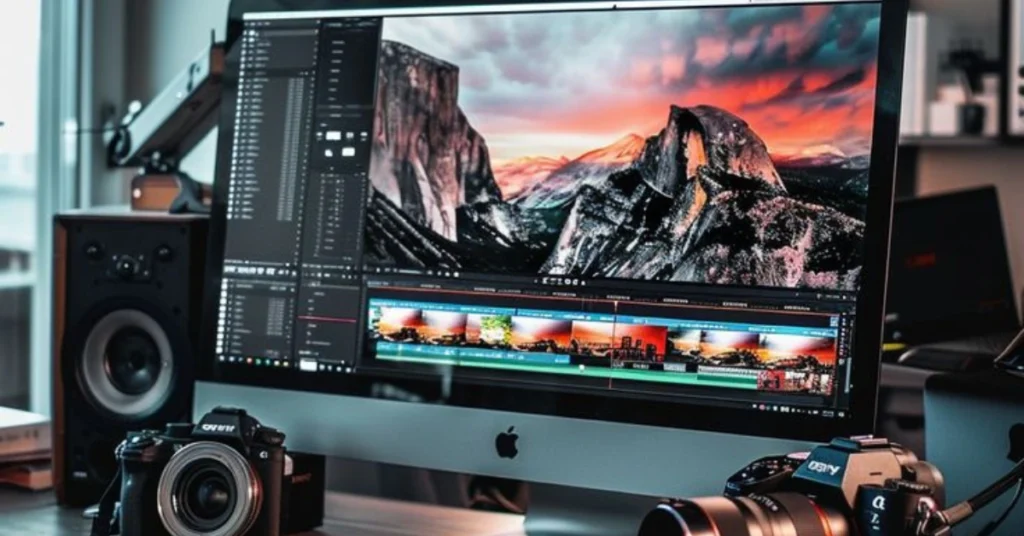If you’ve ever wondered how professional photographers transform ordinary shots into stunning visuals, the answer often lies in Adobe Lightroom Classic. As one of the most powerful and beginner-friendly photo editing tools, Lightroom Classic makes it possible to organize, enhance, and perfect your images with ease. This guide is designed for complete beginners who want to learn photo editing from scratch. By the end of this Lightroom Classic tutorial for beginners, you’ll know exactly how to import, edit, and export professional-quality photos using a step-by-step workflow.
Why Choose Lightroom Classic for Editing?
Before diving into the tutorial, it’s important to understand why Lightroom Classic is the go-to choice for many photographers.
- Non-destructive editing: Your original photo is never altered. All edits are saved as instructions, meaning you can revert back anytime.
- Organized workflow: Lightroom lets you manage thousands of images with folders, collections, and keyword tags.
- Powerful editing tools: From basic adjustments like exposure and contrast to advanced features like masking and lens correction, everything is in one place.
- Seamless integration: It works smoothly with Photoshop if you ever need more complex retouching.
For beginners, this makes Lightroom Classic an excellent place to start.
Getting Started with Lightroom Classic
Installing Lightroom Classic
You can access Lightroom Classic through an Adobe Creative Cloud subscription. Download, install, and launch the program. On first launch, you’ll notice its module-based layout, with options like Library, Develop, Map, Book, and more. For editing, you’ll primarily use Library and Develop.
Importing Your Photos
- Click on the Library module.
- Select Import at the bottom left corner.
- Choose your source (camera, memory card, or folder).
- Review thumbnails and check the images you want to import.
- Click Import.
Your photos are now stored in Lightroom, ready for editing.
Understanding the Lightroom Interface
When learning Lightroom Classic, the layout can feel overwhelming at first. Here’s a quick breakdown.
- Library Module: Organize, sort, and filter your photos.
- Develop Module: Apply edits and adjustments to your images.
- Left Panel: Presets, history, and collections.
- Right Panel: Editing tools like Basic adjustments, Tone Curve, HSL/Color, Detail, and more.
- Filmstrip: Quick navigation through your imported photos.
Basic Photo Editing in Lightroom Classic
Now, let’s dive into the most important part of this step-by-step Lightroom Classic tutorial: editing photos.
Cropping and Straightening
Start with the Crop Overlay tool (R) to fix composition issues. Straighten horizons and adjust aspect ratios if needed.
Basic Adjustments
In the Basic panel under Develop:
- Exposure: Brighten or darken the overall image.
- Contrast: Adds depth by separating lights and shadows.
- Highlights & Shadows: Recover lost details in bright skies or dark areas.
- Whites & Blacks: Fine-tune the tonal range.
- Clarity: Adds texture and definition.
- Vibrance & Saturation: Enhance colors naturally without overdoing it.
Example
If you took a landscape photo with a blown-out sky, reduce Highlights to bring back cloud details and adjust Shadows to reveal hidden elements in darker areas.
Advanced Editing Tools for Beginners
Once you’re comfortable with the basics, explore Lightroom’s advanced tools.
Tone Curve
The Tone Curve lets you adjust specific tonal ranges with precision. Use it to add contrast or create a cinematic look.
HSL/Color Panel
Adjust colors individually:
- Hue: Change color shades (e.g., make skies bluer).
- Saturation: Control the intensity of each color.
- Luminance: Adjust brightness of colors (e.g., darken the greens for a moody forest look).
Detail Panel (Sharpening & Noise Reduction)
- Sharpening: Adds definition to edges.
- Noise Reduction: Smooths grainy images, especially in low-light shots.
Local Adjustments (Selective Editing)
Sometimes, you don’t want to edit the entire image—just specific parts. Lightroom Classic makes this easy.
Tools to Use:
- Adjustment Brush: Paint over areas to adjust exposure, clarity, or color.
- Graduated Filter: Perfect for skies, making them darker or more colorful.
- Radial Filter: Highlights subjects by applying adjustments inside or outside an oval shape.
- Masking Tool (New): Automatically selects skies, subjects, or people for targeted edits.
Example
For a portrait, use the Masking tool to brighten the subject’s face without affecting the background.
Using Presets for Quick Editing
Lightroom presets are saved editing settings you can apply with one click. They’re perfect for beginners who want consistent results.
- Built-in presets: Great starting points for black & white, vintage, or cinematic looks.
- Custom presets: Save your favorite settings and reuse them for future edits.
- Downloadable presets: Many professionals sell or share their custom presets online.
Exporting Your Edited Photos
After editing, it’s time to share your masterpiece.
- Go to File > Export.
- Choose your destination folder.
- Set File Format (JPEG for social media, TIFF for print).
- Adjust Image Sizing if needed.
- Click Export.
Your edited photo is now ready to be shared online or printed.
Common Mistakes Beginners Should Avoid
- Over-editing: Too much saturation or clarity can ruin a photo.
- Ignoring the crop tool: Composition is as important as color.
- Skipping organization: Use collections and keywords to save time later.
- Not using masks: Global adjustments may make one part of your photo look good but ruin another.
Lightroom Classic vs. Lightroom (Cloud Version)
Many beginners confuse Lightroom Classic with the cloud-based Lightroom.
- Lightroom Classic: Desktop-focused, powerful tools, great for professional workflows.
- Lightroom (CC): Cloud storage, simplified features, mobile editing on the go.
For beginners who want complete control, Lightroom Classic is the better choice.
Conclusion
Learning Lightroom Classic might feel overwhelming at first, but with practice, it becomes second nature. This Lightroom Classic tutorial for beginners has shown you how to import photos, use the interface, perform basic edits, explore advanced adjustments, and export finished images. Whether you’re editing portraits, landscapes, or everyday shots, Lightroom Classic provides all the tools you need to transform raw captures into professional-quality photos.


